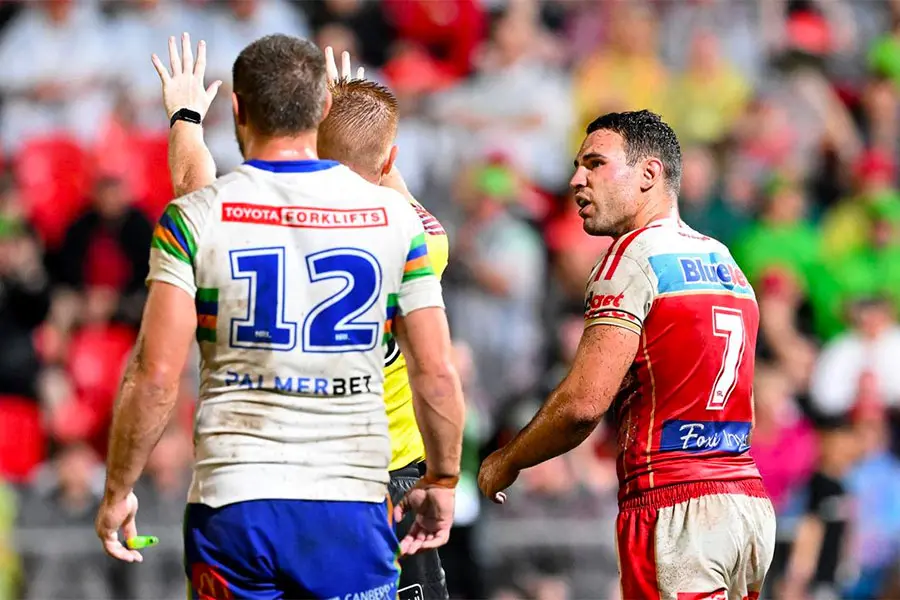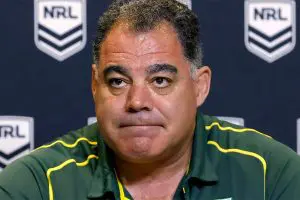NRL needs to fix the Bunker or else blow it up

It’s been seven years now since the NRL launched its cure-all Central Command Centre, better known by rugby league fans as ‘the Bunker’.
Costing millions, the Bunker was introduced in 2016 to help eradicate ‘howler’ decisions and get more calls correct using special technology, including video reviews from dozens of angles, Hawk Eye usage, and a qualified official making the final call.
It’s been called a lemon by many critics, criticised by coaches (until the league slapped a ban on them making any comment on the Bunker), and come up with many howlers of its own.
It’s eroded the confidence of referees to make calls and back their judgment as they have done on the field for more than 100 years, and in many cases it slows the game down.
We’ve seen many instances of confusing decisions following an on-field captain’s challenge.
The inconsistency is extremely frustrating for players and fans, and despite all the expensive technology and elaborate equipment, it can’t remove human error.
A prime example came last week, when the Bunker determined that Dolphins halfback Sean O’Sullivan be sent to the sin bin with the game against Canberra in the balance after he attempted to stop hard-charging forward Corey Harawira-Naera.
Many agreed it was a stinker of a call.
Harawira-Naera chipped the ball ahead and O’Sullivan collided with him a little late, but the Bunker alerted referee Todd Smith about the incident.
A penalty was debatable under the circumstances, yet Smith not only awarded Canberra a penalty but also put O’Sullivan, the Dolphins’ playmaker, in the bin.
He had already banished Canberra forward Hudson Young to the bin for a professional foul, which Dolphins coach Wayne Bennett also said seemed very harsh on the Raiders.
“He kicked the ball in a bad position running flat out at Sean, who was going in the opposite direction but in the same line,” Bennett said of the O’Sullivan incident.
“If there was head contact, then it was an absolute accident. At no stage did Sean try to tackle him… it was just two players making a collision.
“At the end of the day, our game is a collision game and they’ve got to recognise that.”
Some commentators suggested O’Sullivan’s sin-binning was a square-up for Young being harshly dealt with.
The Bunker needs to leave what happens inside the field of play to the referees and touch judges and stick to policing what happens in goal,
Even then, they still get it wrong too many times.
Last weekend, Newcastle fullback Lachie Miller, a rugby union convert, actually ran into the field of play, a foot over the try line, to take a goal line dropout.
It should have been a penalty to the Tigers in front of the posts.
Newcastle won the game 14-12.
This should have been picked by the Bunker, the referee, or the touch judges.
These are simple things, but they can be the difference between winning and losing.
At the end of 2020, the NRL reduced the number of Bunker officials from two to one.
In 2017, the Bunker’s job was to rule on in-goal decisions and goal-line dropouts, but now the video judge tips the referee off to everything he sees.
Some of the game’s biggest names have been, and still are, highly critical of the time the Bunker takes to make a decision, which it sometimes gets wrong.
Because of the speed and the collision element, rugby league will always be hard to police and decisions will always be questioned.
However, most agree that with an element of consistency, the game can live with a few bad calls as long as they are not acceptable one week and illegal the next.
It’s up to the NRL to fix the Bunker so it is not continually attacked, or just blow it up.


